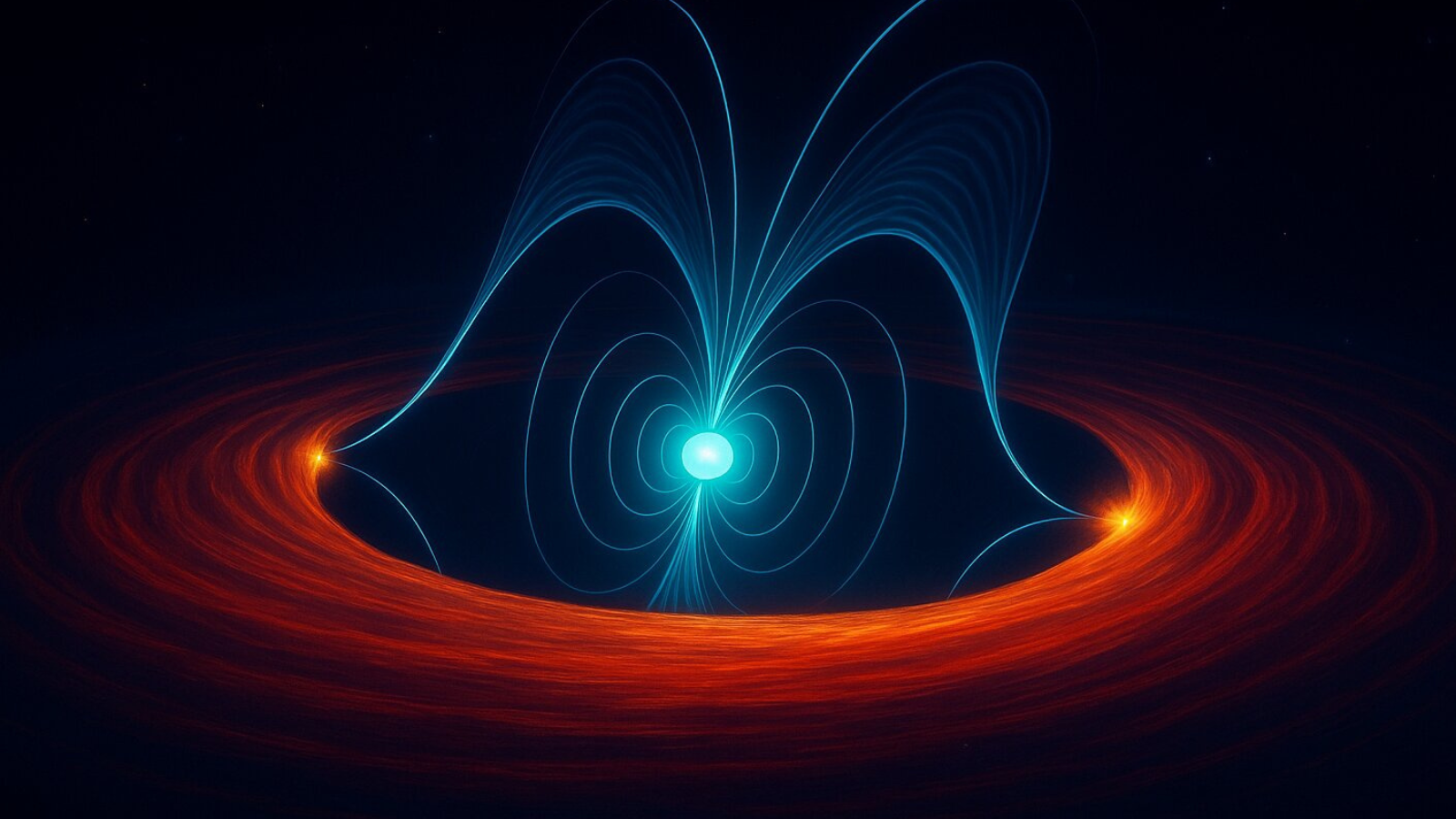Astronomers have made a groundbreaking discovery regarding the nature of radiation emitted by a rapidly spinning neutron star, commonly referred to as a "pulsar." These celestial objects, which are the remnants of supernova explosions, exhibit unique characteristics due to their incredibly dense cores and rapid rotation. Pulsars emit beams of electromagnetic radiation, which can be detected when the beam is oriented towards Earth. Traditionally, it was believed that the radiation was primarily influenced by the material the pulsar strips from its companion star. However, recent observations have revealed that the pulsar's powerful particle winds play a far more significant role in shaping the radiation we observe. This revelation could fundamentally alter our understanding of pulsar dynamics and the mechanisms at play in these enigmatic astrophysical entities.
The discovery stems from a detailed analysis of the pulsar's emission patterns, which demonstrated a complex interaction between the pulsar’s magnetic field and the surrounding environment. Pulsars generate intense magnetic fields that can accelerate charged particles to near-light speeds, creating winds of high-energy particles that emanate from the star. These winds can collide with surrounding material, leading to shock waves that amplify the radiation emitted. This interaction suggests that the particles ejected by the pulsar itself may have a more profound influence on the radiation we detect than previously thought. By focusing on the effects of these particle winds, astronomers can refine their models of pulsar behavior and gain deeper insights into the processes governing their emissions.
Additionally, this finding has implications beyond just the study of pulsars. Understanding how particle winds affect radiation can provide valuable information about the environments around other celestial bodies, such as black holes and massive stars. The principles governing the interactions between particle winds and surrounding material can help astronomers interpret observations across various astrophysical contexts. It opens new avenues for research, potentially leading to discoveries related to cosmic rays, the interstellar medium, and the evolution of stars. By integrating this new understanding of pulsar emissions into broader astrophysical models, scientists can enhance our comprehension of the universe and the complex processes that shape it.
As researchers continue to investigate the implications of this discovery, they aim to gather more data on pulsars and their environments. Future observational campaigns using advanced telescopes and instruments will allow astronomers to further explore the relationship between pulsar winds and radiation. This research could lead to the identification of new pulsars and a deeper understanding of their characteristics, including their rotation rates, magnetic fields, and the composition of their surroundings. Ultimately, this work may not only refine our knowledge of neutron stars but could also contribute to our understanding of fundamental physics, including the behavior of matter and energy under extreme conditions. The ongoing exploration of pulsars promises to unveil further mysteries of the cosmos, enriching our understanding of the universe's most fascinating phenomena.
NASA X-ray spacecraft reveals secrets of a powerful, spinning neutron star - Space

